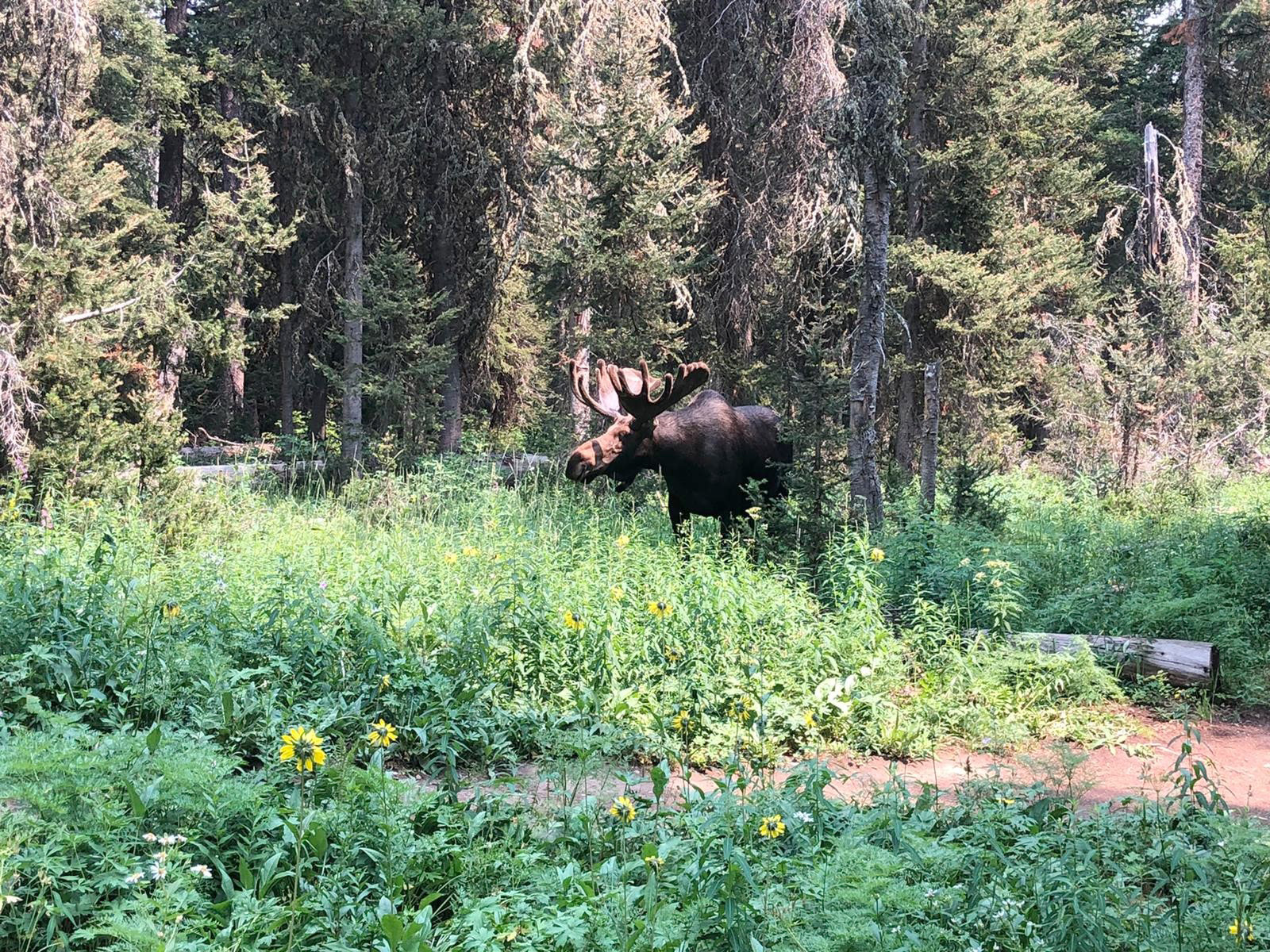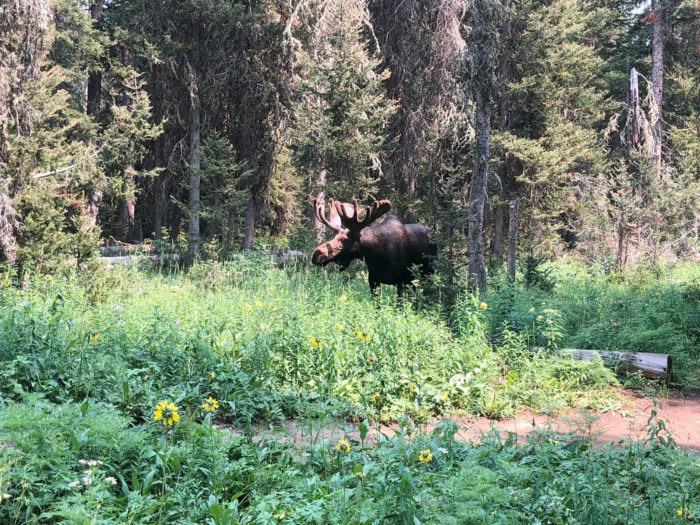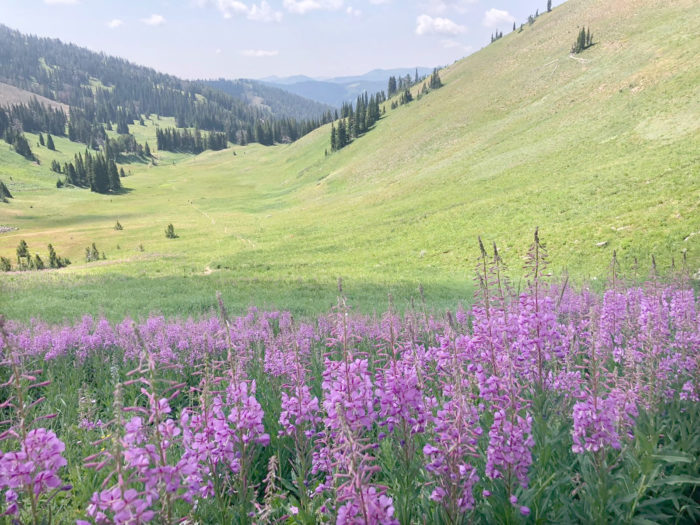
The haze of wildfire smoke from fires in Oregon, California and Canada is a common irritant this summer. Fortunately, there are no close fires to the Tetons and recent monsoonal moisture has come to the rescue of parched meadows and streams. Moose have been seen resting along waterways seeking cooler temperatures. Mature berries can be found along hiking trails and the Canadian geese are practicing their formations and gathering to nosh and rest in meadows around the valley. There is an abundance of beauty to be found in Jackson Hole.

Local — There are Repercussions to Approaching Wildlife
Jackson Hole is part of the Greater Yellowstone Ecosystem, a huge geographical area encompassing 22 million acres of NW Wyoming, Eastern Idaho and Montana and including all of Yellowstone and Grand Teton National Parks, and the John D. Rockefeller Memorial Parkway. It is one of the largest nearly intact temperate-zone ecosystems on Earth! The ecosystem is managed in order to protect its natural and cultural resources as well as ALL the species that live here.
The pressure of increased numbers of residents and visitors to the valley is threatening the well-being of the wildlife that call this area home. To the best of our ability, we need to respect and protect ALL species. When we get too close to wildlife, we threaten them, and they are also become a threat to us. An Illinois woman has been charged for approaching a Grizzly sow and two cubs to snap photos. She was just 10 yards from the sow when she was charged. The woman is now permanently banned from the Park and, needless to say, lucky to be alive.
Learn More: Illinois woman charged with disturbing wildlife in Yellowstone »
Regional — Grey Wolf Protection
Environmentalists are seeking protection of Grey Wolves in Western States to allow them to move freely within a suitable habitat. Idaho and Montana have both passed laws to intentionally reduce the wolf population and wildlife advocates seek protection to ensure genetic diversity and limit unregulated hunting and poaching.
Learn more: Coalition seeks relisting of gray wolves in US West »
Spiritual
Live only in the present, not in the future.
Do your best today; don’t look for tomorrow.
-Paramahansa Yogananda , Self- Realization Magazine
What’s in the Woods (field notes)
7/3 (Snake River) mature and immature bald eagles
7/6 (Horseshoe Bowl) aster, columbine, lupine, Indian paintbrush, geranium, sunflower
7/10 haze in valley from Idaho fires
7/11 (Highway 390) herd of cow elk and calves grazing in Aspens
7/18 (Glory to Ski Lake) beautiful flowers at 9000 plus feet, best on northern slopes- geranium, flax, lupine, yellow sulphur paintbrush, Indian paintbrush, penstemon, buckwheat, gentian violet, death camus, sagewort, groundsel spp, mountain dandelion, osha, mint, fleabane, thick-stemmed aster, junco, chipping sparrow, clark’s nutcracker, white-crowned sparrow, blue grouse, pika, whitebark pine cones
7/19 valley temps reach the nineties; hazy skies
7/22 off to visit family
7/28 monsoonal moisture throughout the valley

Trail Suggestion
Early August is a wonderful time to get to higher elevations in the mountains to seek out wildflowers and cooler temperatures. Consider a gondola ride in Teton Village at the Jackson Hole Mountain Resort to reach the cooler temps and great views at 9,000 feet. All the canyons in Grand Teton National Park are a joy to explore. Death Canyon and Paintbrush Canyon are two of my personal favorites. Phillips Pass, located in the southern Tetons, guarantees fields of blooming Fireweed to lure you up the trail. Bring your bear spray and have fun!

Backcountry Tips
- Fire restrictions are in place
- Stay hydrated
- Tread lightly
- Uphill hikers have the right of way


